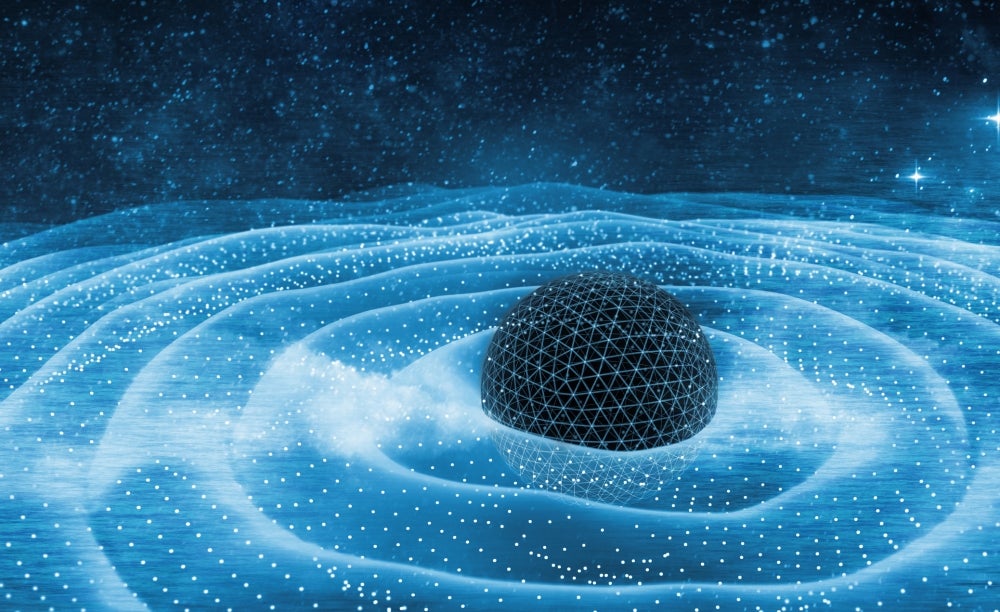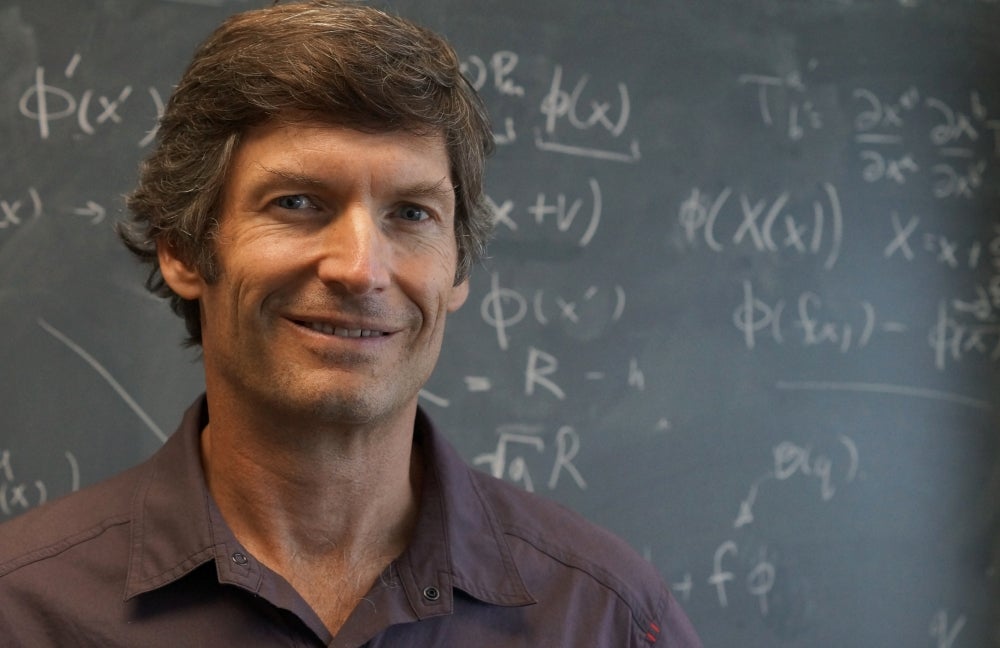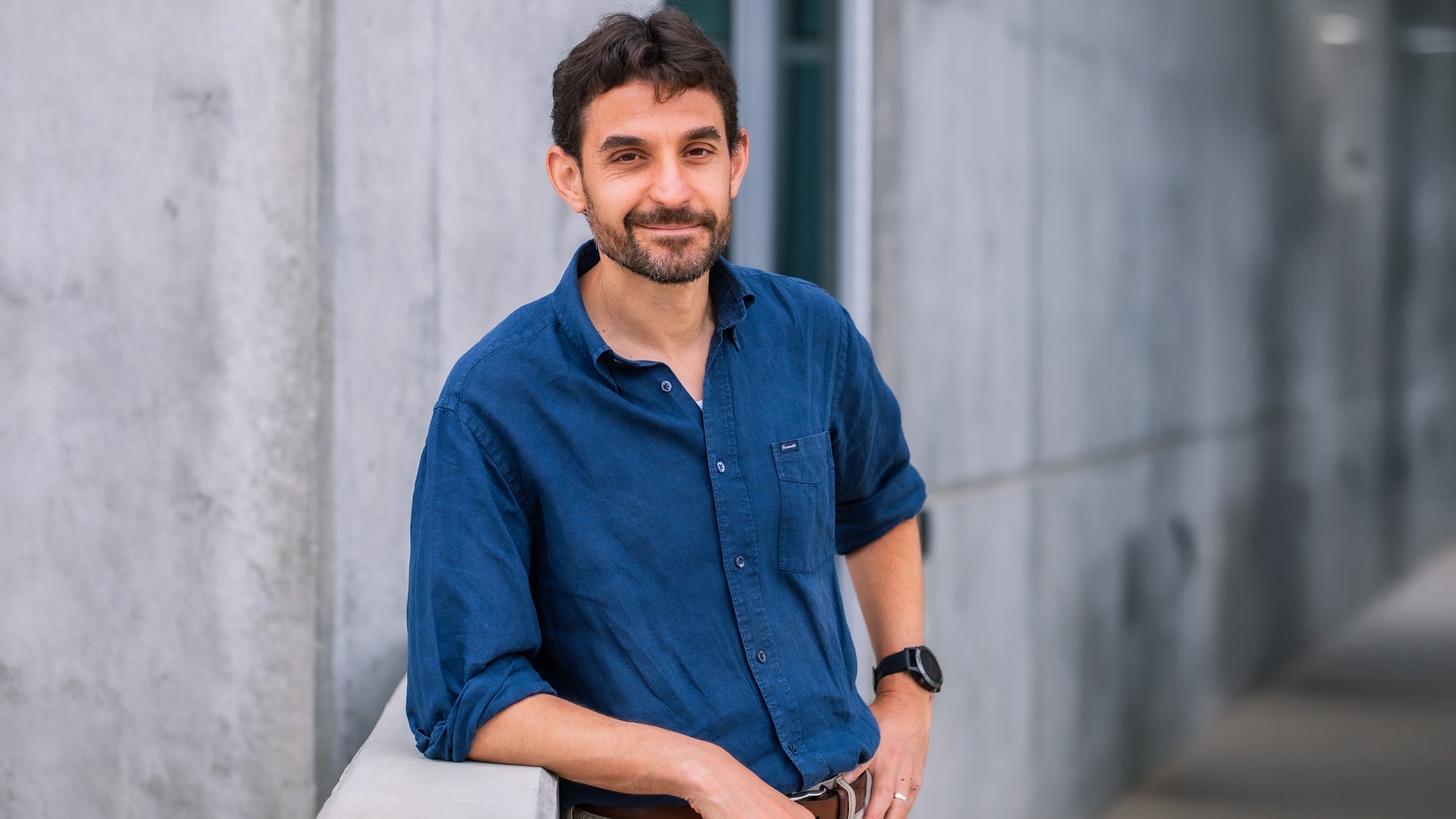
The Search for Quantum Gravity

About a century ago, Albert Einstein amazed the world with his groundbreaking theory of relativity, and ever since he shared this profound understanding of gravity and spacetime, physicists everywhere have worked hard to prove, refine and extend it. In the intervening decades, numerous observations have borne Einstein out, with phenomena such as gravitational lensing and redshift, shifts in planetary orbit and, more recently, gravitational waves and observations of black holes.
However, for all the advances we’ve made in witnessing the more readily observable, macro effects of gravity, there remains a gap — a chasm, really — in our ability to understand gravity in the context of another profound discovery: quantum mechanics, the physics of matter and energy at their smallest scales.
“There is the longstanding problem, perhaps the greatest remaining from 20th century physics, of reconciling quantum mechanics with gravity,” said UC Santa Barbara theoretical physicist Steven Giddings. The universe is quantum, and unlike the other fundamental forces — the electromagnetic, the weak and the strong nuclear forces — which have been described within quantum field theory, what we know of gravitation remains solidly in the realm of classical physics.
“Associated with that problem is a gulf between theory and observation,” said Giddings, who specializes in high energy and gravitational theory, as well as quantum black holes, quantum cosmology and other quantum aspects of gravity. Traditional thinking leads one to believe that quantum aspects of gravity are only observable if we explore incredibly short distances, he said, such as the Planck length (10-35 meter), thought to be the smallest length in the universe and the length at which quantum gravity effects become important. It’s also far beyond observational reach.
But what if it was possible to detect quantum gravity at longer, observable length scales? Giddings, and fellow theorists Kathryn Zurek and Yanbei Chen at Caltech, Cynthia Keeler and Maulik Parikh at Arizona State University, and Ben Freivogel and Erik Verlinde at University of Amsterdam, think that could be the case.
“Various theoretical developments have indicated that quantum gravity effects may become important at much greater distances in certain contexts, and that is truly exciting and worth exploring,” Giddings said. “We are taking this seriously.”
And, thanks to support from the Heising-Simons Foundation, the team is poised to bridge that chasm, by exploring ways in which quantum gravity may be observed, via effects a longer length scales.
“We are thrilled that the Heising-Simons Foundation has chosen to support this vision of exploring new effects, particularly at long distances, in quantum gravity, and the possibility that they lead to observational effects,” Giddings said of the $3.1 million in multi-institution grants to help the team push the boundaries of our knowledge of quantum gravity. “Their support should really move this research forward.”
Quantum Effects at Longer Lengths
Reconciling relativity to quantum mechanics has challenged physicists for the better part of a century, with puzzles such as the black hole information paradox. That’s where relativity and quantum mechanics violently conflict on the issue of what happens to information that falls into a black hole, those extremely high-gravity voids in spacetime. A relativistic picture indicates that the information gets destroyed as the black hole slowly evaporates, while quantum mechanics states that that information cannot be destroyed.
A suggested approach to that conundrum and other similarly complex issues emerges with the proposed holographic principle, a fundamentally new idea about the possible behavior of quantum gravity.
“There are different ways to explain it, but one is that the amount of information you can put in a volume is not proportional to the volume but to the surface area surrounding the volume,” Giddings explained. A consistent theory incorporating this principle might explain how information is not destroyed, resulting in a relativistic object, such as a black hole, obeying quantum rules.
“When one tries to reconcile the existence of black holes with the principles of quantum mechanics, one seems to be led to the conclusion that new quantum gravity effects must become important not just at short distances, but at distances comparable to the size of the black hole in question — for the largest black holes we know, many times the size of our solar system,” Giddings said.
The principle, which started out originally with black holes, has been suggested to extend to the universe in general — what we perceive as our three-dimensional reality may even, in a sense, have an underlying two-dimensional description. This could make its mathematical description more elegant and compelling.
“This is a big departure from the properties of quantum field theories that describe other forces of nature — like electromagnetism and the strong force — and is a feature of gravity that strongly suggests that a theory of gravity has a very different underlying structure,” he added. This fundamentally different structure might be part of a description with novel properties, in which information is preserved.
A related argument for the observability of quantum gravity at greater distances comes from the notion that very high energy collisions, though far beyond what we have been able to accomplish, start producing quantum gravitational effects at increasingly large distances.
“When one considers extremely high energy collisions of particles, one is not probing shorter distances any longer — as has been true at accessible energies — but instead one starts to see effects at longer distances, due to basic properties of gravity,” Giddings said.
Quantum Gravity at Work
Recent developments in experimental observations have made it possible to detect and measure new effects of gravity, such as with Caltech’s Laser Interferometer Gravitational Wave Observatory (LIGO), the Virgo interferometer in Italy, and the Kamioka Gravitational Wave Detector (KAGRA) in Japan. Each of those facilities is turned to space to sense gravitational waves coming from major events, such as the mergers of massive celestial bodies like black holes and neutron stars. These, as well as observations of light from near black holes by the Event Horizon Telescope, may also be sensitive to long-range quantum effects. In addition, ideas related to holography suggest the possibility of new quantum effects in lab-based settings, and newer experiments with interferometers may provide novel ways to test them.
The task for the researchers as they resolve foundational issues and understand aspects of the fundamental description of quantum gravity, is to develop “effective descriptions” that can connect theory with observations coming in from the interferometers and other instruments.
“In physics, we have often been in the situation where we don’t have the complete theory, but we have an approximate description that captures certain important properties of that theory,” Giddings explained. “Often, such ‘effective descriptions’ can be surprisingly powerful, and lead to deeper insight about the more fundamental theory.”
The group’s diverse mix of backgrounds is a strength of this collaboration, with specializations ranging from quantum gravity to particle physics, string theory to gravitational wave physics. Through a series of meetings to be held over four years the collaboration will progress from foundational issues, such as sharpening the description of holography and understanding the mathematical structure of gravity, to studying models that may describe behavior of quantum gravity, its interactions and potentially observable effects, to developing specific observational tests with the interferometers and observations of black holes.
Along the way, the collaboration will grow, starting with the seven core members and adding postdoctoral fellows and graduate students, and finally broadening activities to include additional physicists to discuss collaboration results and related theoretical advances from the broader community.
“If we are able to observe quantum effects of black holes, that will be truly revolutionary,” Giddings said. “It would also likely help guide the conceptual revolution of reconciling quantum mechanics with gravity, which we expect to likely be as profound as the revolutionary discovery of quantum mechanics.”



